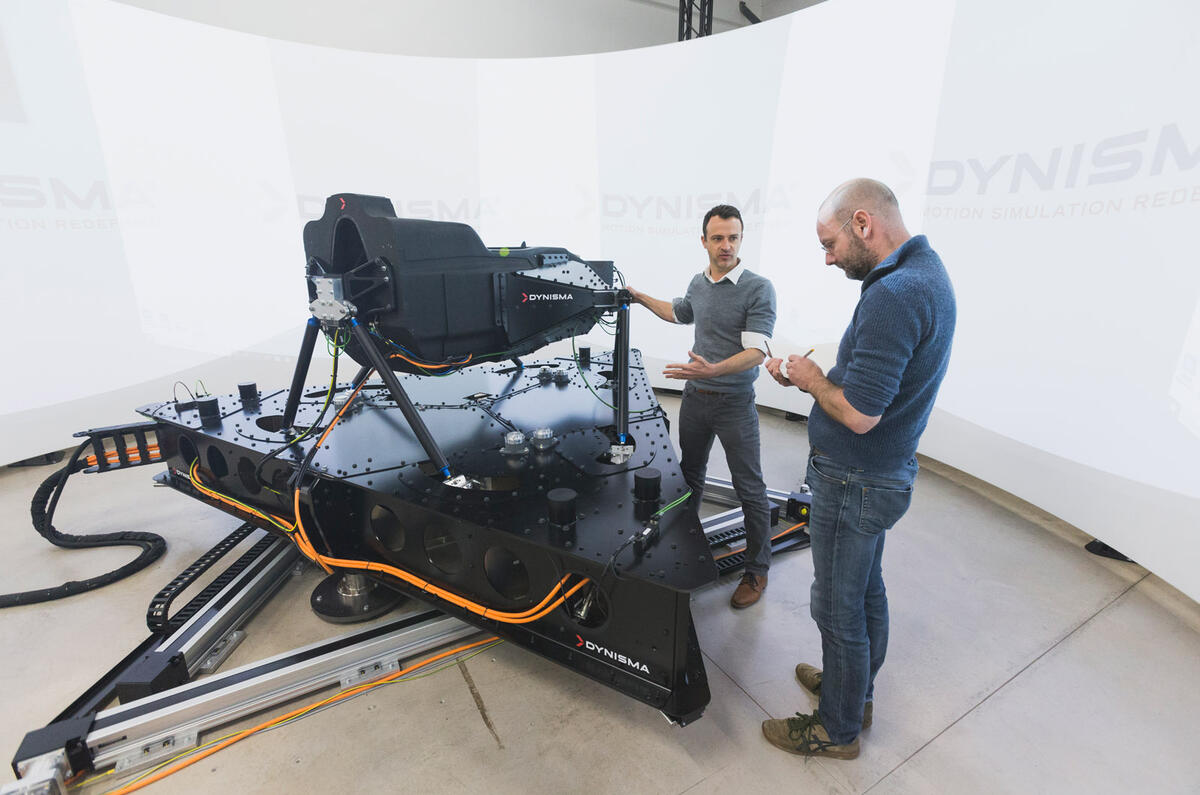I don’t tend to feel queasy in car simulators, but within a few seconds of sitting in one at sim company Dynisma’s Bristol headquarters, I’m going a bit green.
It isn’t the sim’s fault. It hasn’t even been started up yet, so it isn’t moving. Actually, that’s the problem. On the big screen in front of me, the car I’m simulated to be sitting inside is gently rolling down a pit straight, so my eyes are telling me one thing and my backside quite another. I shut my eyes until the technicians actually boot up the system. Problem solved.
In part, the relationship between eyes and body is what’s key to making a simulator feel natural to the people sitting inside it. And that’s one of the reasons why I’m visiting Dynisma, founded in 2017 by former McLaren and Ferrari Formula 1 engineer and simulator expert Ashley Warne – to try one of its Dynisma Motion Generator (DMG) systems.
I think it’s a bit easy to overlook simulators. Certainly, elements of the automotive industry did for a while. A very senior dynamics engineer I know is only recently a convert to how useful they can be.
They can shave millions of pounds and thousands of hours from the development of a single car and, if used right, allow companies to develop better cars. Plus they reduce the number of physical prototypes: the industry in general spends £7 billion a year on those. If it can build fewer, it will save money.

McLaren was into simulators early. I tried one in 2011, when it was developing the MP4-12C. Warne ran McLaren’s simulator programme, then did similar for Ferrari.































Join the debate
Add your comment
Modern simulators are amazing as development tool and training aid. No dual seat F35 have been made. The pilots all learn in the simulator then your first flight in the £100million jet is a solo! (Also shows how the aricraft basically does the flying itself)